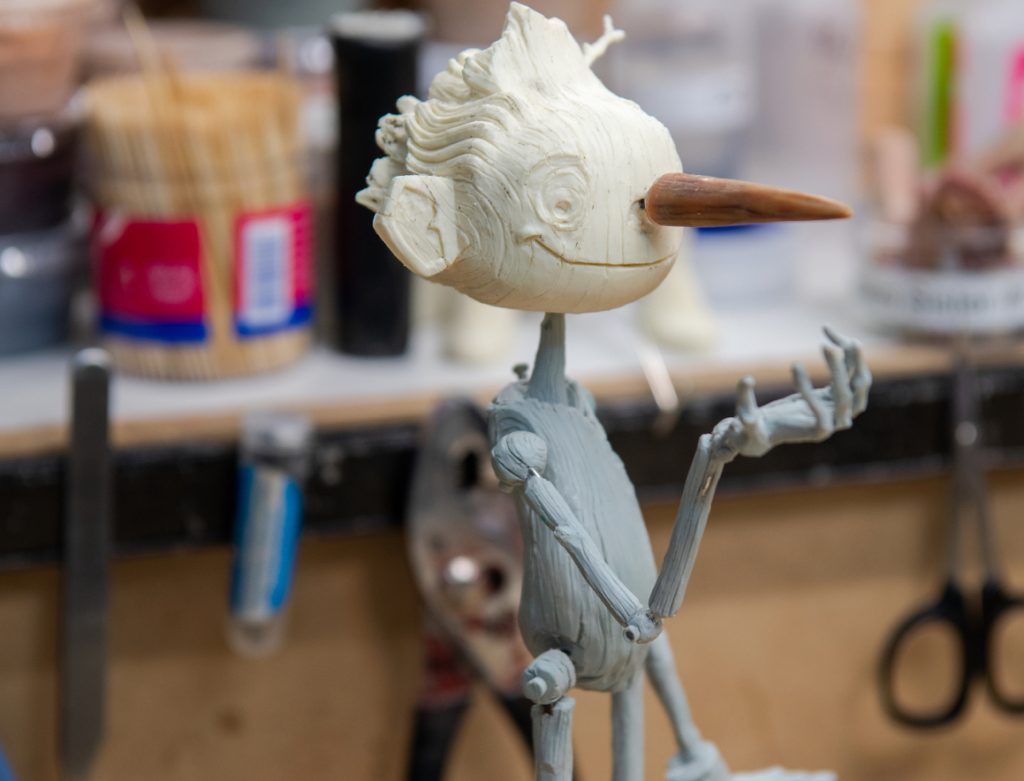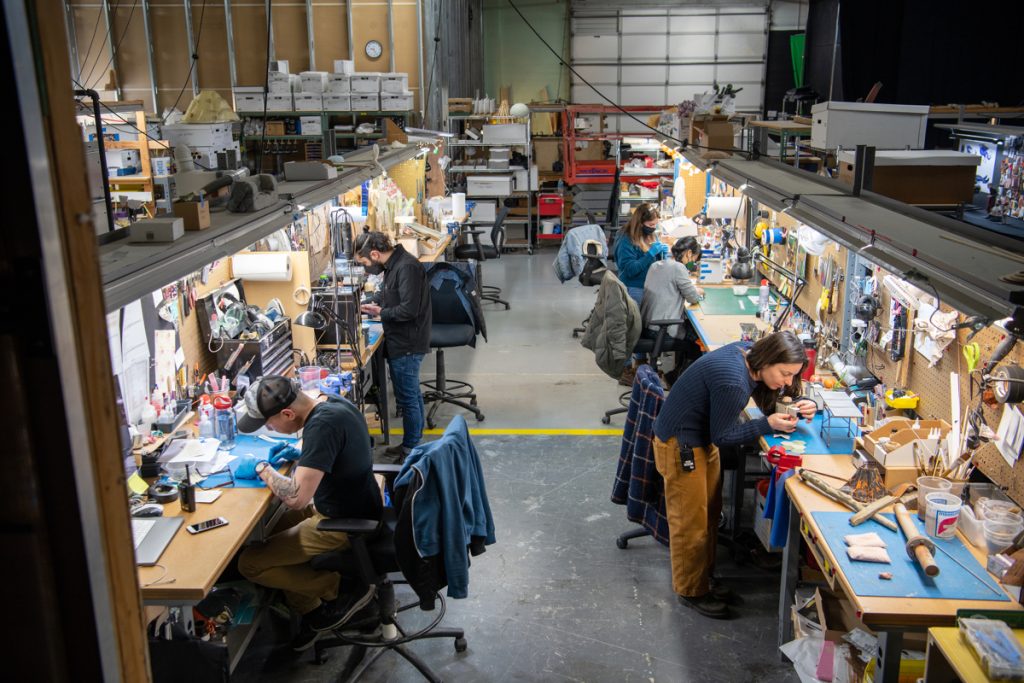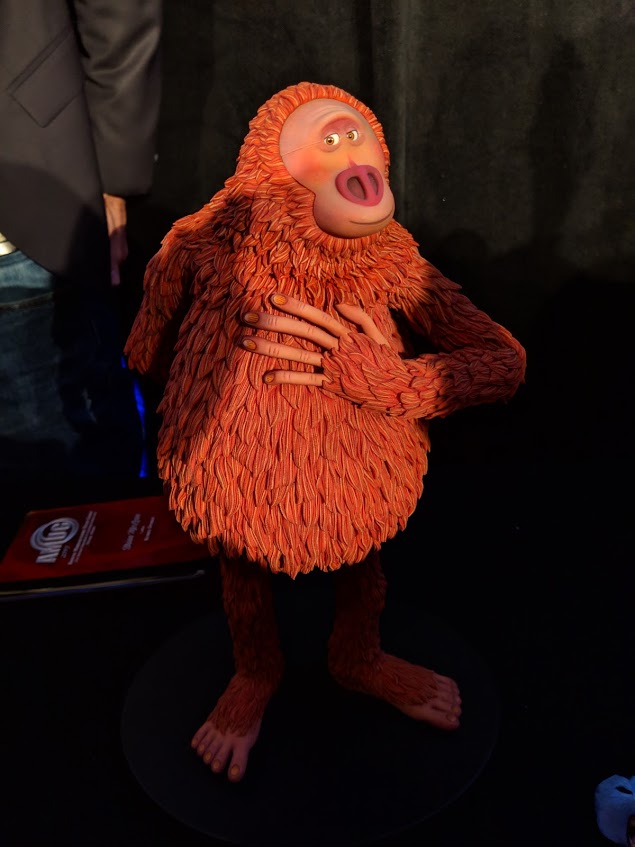One of the lead fabricators behind the new stop motion Pinocchio film on Netflix has revealed how 3D printing helped make the movie possible.
Rather than molding the heads of the movie’s characters from clay, in a way that allowed their emotions to change frame-by-frame, director Guillermo del Toro asked that they be made mechanically and fitted with silicone skin. Doing so is said to have provided animators with greater control over how the puppets performed and enabled them to ‘act’ more naturally than traditional production would allow.
“It’s interesting because Guillermo wanted it to be mechanical head animation, really, because he directed this film in a completely different way to how all stop-motion had been directed up until this point,” Georgina Hayns, the film’s director of character fabrication, told B4s & Afters at the VIEW Conference in Turin. “He directed the animators as if they were live actors, not as if they were animators.”
“He wanted the performance to come through in the puppets as actors rather than puppets. And what he felt was that mechanical heads gave more ability for the animators to actually act.”

Overcoming puppetry challenges
Once given the go ahead by a movie’s director, puppets tend to start life as a molded clay maquette, which serves as a basis for the character’s likeness throughout the entire film’s production. Though often cast from colorless resin, these can be highly complex, with intricate features that closely mimic those of organic humans or animals.
In a recent interview on the subject, Hayns explained how “It can be really hard to perceive the level of detail that goes into this step, especially head mechanics on puppets.” With the head of such characters often being no larger than three inches in diameter, the Pinocchio fabricator added that it’s an “intricate” process, involving the cramming in of mechanisms that allow for the operation of jaws and lips.
These issues, combined this the scale of the Pinocchio puppet Hayns and her team were trying to make, meant that the medley of resin-modelled and metal-cast parts they’d normally use wasn’t going to be sufficiently strong this time out.
Luckily, however, Hayns had Richard Pickersgill, a lead puppet maker at Mackinnon & Saunders, on hand to help overcome the difficulties behind creating and animating the puppets for Pinocchio. According to Hayns, Pickersgill, who had worked with her on the animated movie Coraline, introduced his firm to 3D printing as an animation tool some time ago. But he had now come across a new system “he was blown away with, in terms of the quality level” that it could achieve.

Bringing Pinocchio to life
Before Hayns’ crew could begin toying with 3D printing, they first needed to make sure they were happy with the mouth shapes they’d chosen for each of the movie’s characters. This saw the team conduct drawn animation tests, in which draw cells were placed over puppet maquette head sculpts, allowing them to see their initial designs in 3D.
Once the final maquette designs had been signed off, they were 3D scanned and turned into digital models. Ultimately, of the total parts used to make the Pinocchio model in the film, its entire torso midsection was 3D printed, as were its metal joints. Like the puppet’s resin and silicone sections, these could be painted so that they featured a toy-like appearance that would otherwise have been difficult to achieve.
“A little wooden boy has got more challenges [as his face] isn’t really like a human face,” explained Hayns. “So his eyes were holes, rather than any kind of ball or anything sticking out. And then we had to deal with the wood grain, and the wood grain on him is all vertical. So it would’ve been a nightmare to get rid of that line.”
This, in tandem with del Toro’s desire to have the puppets truly ‘act,’ led Hayns and her team to mostly give them mechanical heads, with Pinocchio himself being animated with full ‘replacement heads.’ Rather than manually modelling the different heads for the puppet as his surroundings changed in the movie, the crew opted to 3D print them in a way that made the whole process significantly faster.
Although the ordering process is said to have involved a lot of back and forth, which had Hayns and co. concerned about whether the project could be completed on time, she admitted that when the orangey-brown final design arrived back at the studio, she thought “oh, this is our guy,” making the three-month wait worth it.

Believe it or not, 3D printing has actually been deployed multiple times already in the rapid production of character models for moviemakers. In 2019, LAIKA 3D printed models for the film Missing Link using Cuttlefish software and a 3D printer driver from the Germany-based Fraunhofer Institute for Computer Graphics Research (Fraunhofer IGD). The initiative saw the firm create over 100,000 detailed color 3D faces for its stop motion feature with the help of a Stratasys J750 system.

A year earlier, it was also revealed how ETEC 3D printing can enable stop motion animation. In a promotional video, one of the firm’s customers Stoopid Buddy Stoodios explained how its Perfactory 4 DSP XL 3D printer was allowing it to make aesthetic changes to character models in much less time that it would have taken to sculpt them by hand.
To stay up to date with the latest 3D printing news, don’t forget to subscribe to the 3D Printing Industry newsletter or follow us on Twitter or liking our page on Facebook.
While you’re here, why not subscribe to our Youtube channel? featuring discussion, debriefs, video shorts and webinar replays.
Are you looking for a job in the additive manufacturing industry? Visit 3D Printing Jobs for a selection of roles in the industry.
Featured image shows a Pinocchio puppet used in the making of the new Guillermo del Toro movie. Photo via Jason Schmidt, Netflix.



